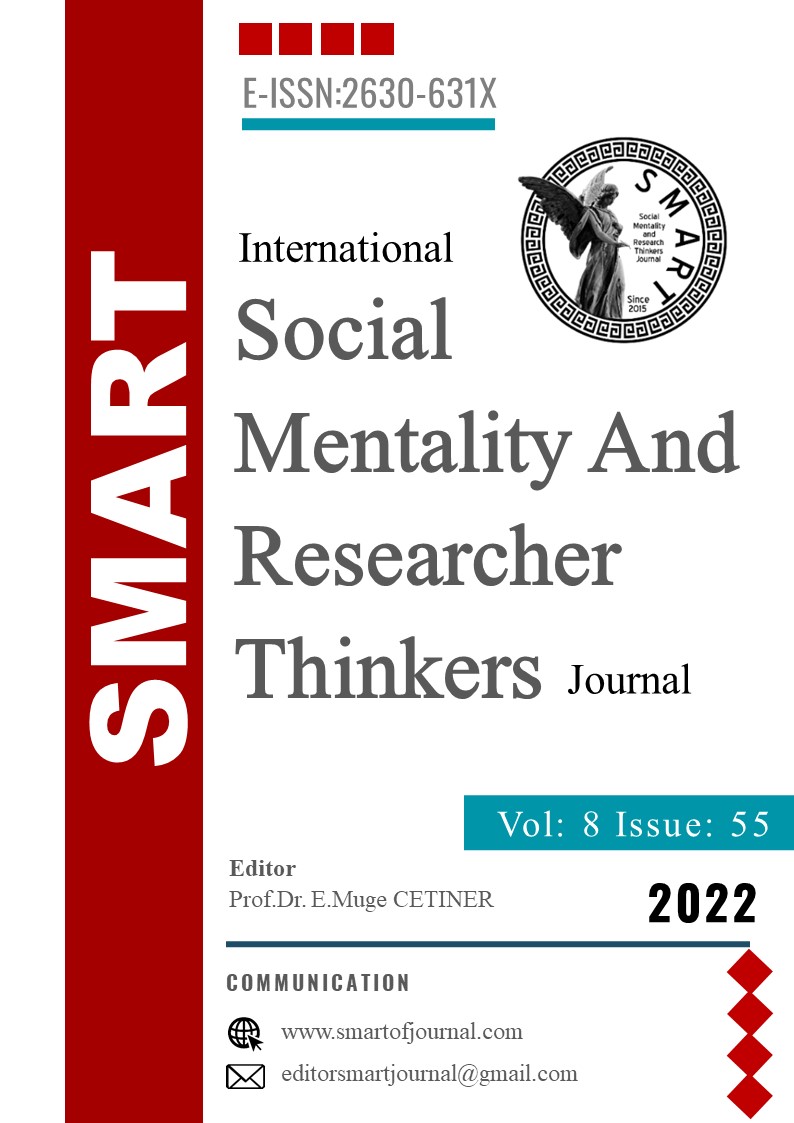Günümüzde Biyomorfik Yaklaşımların Mimari Ve Form Gelişimi Üzerinde Bir Araştırma (Greg Lynn Form Ve Kavramları Örneği)
Author :
Abstract
Doğa ve içindeki organizmalar, çevredeki değişken koşullara bağlı çözümler bulmuş veya o doğrultuda kendilerini değiştirmiştir. Bu nedenl e milyarlar sene türlerinin hayatını evrende sürdürmeyi başarmışlardır. Doğadaki mevcut çözümlerden yapıların tasarımında yararlanmak mimari binaların strüktür ve kurgu sureçinde daha faydalı olmaktadır. Bu sebepten günümüzde doğaya yönelik akımlar mimari tasarımların vazgeçilmez yönü olarak ortaya çıkmıştır. Dolayısıyla son dönemlerde biyomimetik, biyomemisis ve eko-tech gibi terim, akım ve kavramlar, doğa ve mimari arasındaki ilişki üzerinde kurgulanmıştır. Bu doğrultuda pek çok düşünür ve mimar çeşitli fikir ve yöntemler ortaya çıkarmışlar, Greg Lynn, teknoloji ve biyolojini ortak bir çerçevede ele almış ve tasarım kavramlarında farklı terim ve olgu sunulmuştur. Bu araştırmada çeşitli yöntemlerle doğa ve mimarlık arasındaki ilişki ele alınmış ve Greg Lynn düşünceleri ve terminolojisi üzerinde analizler yapılmıştır. dijitalleşme ve programlar ile doğa ve mikro organizmadaki bağlantıları açıklayarak bina tasarımında onların bir kavram ve konsepte dönüşmesi tartışılmıştır. bu konuda Greg Lynn'in embriyolojik evleri ve Persbyterian kilisesinin tasarımı esas alınarak, bu terminoloji ve olgular analiz yapılmıştır. Sonuç olarak günümüzdeki teknoloji ve doğadaki mikro strüktürel organizmaların bağlantısını bina tasarımı üzerinde değerlendirilmiş doğanın gelecek mimari yapılarında rolü ve etkisi tartışılmıştır.
Keywords
Abstract
Nature and the species within it have developed solutions or modified themselves in response to changing environmental conditions. As a result, they have managed to keep their species alive in the universe for billions of years. It is more useful in the structure and installation process of architectural buildings to utilize existing solutions in nature in the design of buildings. As a result, today's movement toward nature has become an essential component of architectural designs. As a result, terminology including biomimetics, biomimesis, and eco-tech have lately been utilized to depict the link between nature and architecture. Many thinkers and architects have proposed various ideas and methodologies in this regard, including Greg Lynn's discussion of technology and biology in a common framework and presentation of numerous terminologies and phenomena in design concepts. The relationship between nature and architecture was addressed using various approaches in the present study, and Greg Lynn's concepts and terminology were analyzed. The translation of digitization and programs into a concept in building design is discussed by explaining the connections between nature and microorganisms. This terminology and facts were examined in light of Greg Lynn's embryological houses and the Presbyterian church's design. As a result, the impact of nature's micro-structural organisms on building design has been assessed, and the role and impact of nature on future architectural constructions has been discussed.
Keywords
- Abaidoo, S. (1997). Human-nature Interaction and the Modern Agricultural Regime: Agricultural Practices
- Abaidoo, S. (1997). Human-nature Interaction and the Modern Agricultural Regime: Agricultural Practices and Environmental Ethics. PhD Dissertation, Dept. of Sociology, University of Saskatchewan, Canada.
- Ahmadi, B. (2018). Structure and interpretation of text. Publish of Center Publishing, 809 p, Iran.
- Antoniades, A.C. (1990). Poetics of architecture : theory of design / Anthony C. Antoniades, New York: New York : Van Nostrand Reinhold.
- Aziz, M.S. and A.Y. El Sherif. (2016). Biomimicry as an approach for bio- inspired structure with the aid of computation. Alexandria Engineering Journal, 55(1): p. 707-714.
- Bar-Cohen Y. (2005). Biomimetics: Mimicking and being Inspired by Biology, CRC Press, pp. 505.Benyus, J. M. (1997). Biomimicry Innovation Inspired by Nature. Harper Perennial, New York.
- Browning, Hon. AIAWilliam & Et al. (2014). 14 patterns of biophilic design Improving Health And Well- Being
- Dora, L. (2011). Biomimicry invention inspired by nature, Kids Can press limited,Canada.Eryildiz S., Mezini L. (2012). Bioarchitecture – Inspirations From Nature, Gazi University Journal of Science, 25(1), 263-258.
- Felameki, MM. (2011). Theoretical roots and trends of architecture. Feza press, 432p, Tahran.
- Fragkou D., Stevenson V. (2012). Study of Beehive and its potential “biomimicry” application on CapsuleHotels in Tokyo, Japan, Proceedings of 2nd Conference: “People and Buildings”, London Metropolitan University, London, U.K.
- Gruber, P. (2008). Biomimetics in Architecture. Reading, U.K.: The University of reading Institute forBuilding Construction and Technology.In The Built environment, Terrapin Bright Green LLC, New York NY. Washington DC.
- Hossein Eskandani, O., Doraj, P. (2021). Redevelopment of Brownfields, an Approach toward SustainableLocal Development. Turkish Journal of Computer and Mathematics Education (TURCOMAT), Research Article, Vol. 12, No. 13, 4808-4815.
- Janine, B. (2002). Biomimicry: Innovation Inspired by Nature, New York: Perennial.
- Jencks, Ch. (1995). The Architecture of the Jumping Universe. Wiley press, 177 p, USA.
- Jencks, Ch., Baird, G. (1970). Meaning in architecture. Publish of George Braziller, 288 p, New York,USA.
- Kellert, S.R. (2008). Biophilic Design: The theory, Science, and practice of Bringing BuildingLife. Hoboken, New Hersey: John Wilcy & Sons, Inc.
- Lynn, G. (2004). Going Primitive, public lecture as part of Canadian Centre for Architecture / Daniel LangloisFoundation for Art, Science, and Technology conference Devices of Design. Note that peripheralexperimentation with the House’s landscaping involved the application of principles of animate form to iconic European.
- Lynn, G. (2004). Folds, Bodies & Blobs: Collected Essays, La Lettre volée, Bruxelles. Lynn, G. (1999). Animate Form, New York: Princeton Architectural Press.
- Nasar, J. (1988). Environmental Aesthetics: Theory, Research and Applications. Cambridge University Press, 530p, USA.
- Oryan, C. (2014). Biophilic Design Patterns Emerging Nature-Based Parameters for Health and Well-Being in the Built Environment, International Journal of Architectural Research, Volume 8,Issue 2, 62-76.
- Pawlyn, M. (2011). Biomimicry in Architecture, Riba Publishing, london.
- Williams, H. A. (2003). Zoomorphic-New Animal Architecture, Laurence King Publishing Ltd., New York.
- Yowell, J. (2011). Biomimetic Building Skin (Online) Available at http://tulsagrad.ou.edu/studio/biomimetic.
- Zari, M.P. (2007). Biomimetic Approaches to Architectural Design for Increased Sustainability. Sustainable Building Confernece.
- Yılmaz, S., Doraj, P., Hossein Eskandani, O.(2020). Concepts in Sustainable Architecture and CriticalApproaches On The Ecological Effect, The Journal of International Social Research, Vol. 13, Issue 69, pp. 695-703.
